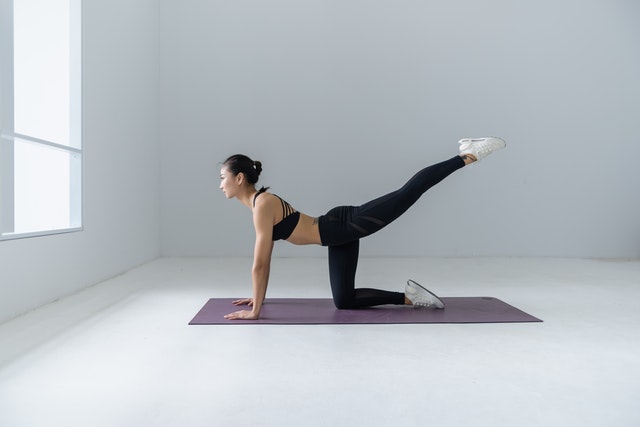Childproofing and Child Development: Balancing Safety With Exploration

As parents, one of our primary responsibilities is ensuring the safety and well-being of our children. Childproofing our homes is a crucial step in creating a secure environment, but it’s equally essential to foster an environment that allows for exploration and learning. In this article, we’ll discuss the delicate balance between childproofing and child development, emphasizing how both can coexist harmoniously to support your child’s growth and curiosity. For more information, visit the proofing parent.guide.
The Importance of Childproofing
Childproofing involves making your home safe for your child by identifying and addressing potential hazards. Some common childproofing measures include securing cabinets, installing safety gates, and covering electrical outlets. Here’s why childproofing is essential:
- Preventing Accidents: Childproofing helps reduce the risk of accidents and injuries, which are common among curious and active young children.
- Peace of Mind: Knowing that your home is childproofed allows you to relax and focus on spending quality time with your child without constant worry.
- Independence: A childproofed environment enables your child to move about more independently, promoting physical and cognitive development.
Balancing Safety With Exploration
While safety is paramount, it’s equally important to provide an environment that fosters exploration, creativity, and learning. Here’s how to strike the right balance:
- Secure but Stimulating: Childproofed spaces can still be engaging and stimulating for children. Invest in age-appropriate toys and activities that encourage exploration and learning.
- Supervised Independence: Allow your child to explore within a safe and supervised space. For example, a playpen or a childproofed room allows them to move freely while ensuring they stay away from potential hazards.
- Childproofing Gradually: As your child grows and becomes more aware of their surroundings, you can gradually adjust childproofing measures to accommodate their development. Remove unnecessary safety gates or introduce more challenging puzzles and toys.
- Teach Safe Habits: As your child gets older, teach them about safety and potential dangers. Explain why certain areas or objects are off-limits and encourage responsible behavior.
- Positive Reinforcement: Praise and positive reinforcement are effective ways to guide your child toward safe behaviors. Celebrate their achievements and safety-conscious actions.
Promoting Cognitive and Motor Development
Balancing childproofing with exploration not only keeps your child safe but also supports their cognitive and motor development:
- Problem-Solving Skills: Childproofing can present interesting challenges for your child to solve. For example, opening a childproofed cabinet requires problem-solving skills and fine motor development.
- Physical Development: Providing safe spaces for physical play, like crawling, climbing, and walking, promotes physical development and coordination.
- Curiosity and Creativity: Allowing exploration within safe boundaries encourages curiosity and creativity. Your child can experiment with different objects and discover cause-and-effect relationships.
In Conclusion
Childproofing and child development can go hand in hand when approached thoughtfully. A safe environment allows your child to explore, learn, and develop while giving you peace of mind. By finding the right balance between safety and exploration, you’re fostering not only physical safety but also your child’s intellectual and emotional growth. As your child grows, adapt your childproofing strategies to match their developmental stage, always keeping their well-being and curiosity at the forefront of your parenting journey.…



 One way to prepare for withdrawal symptoms is to speak with a medical professional. They can help you determine the best course of action and provide support during your detox process. This could include medication to mitigate some of the symptoms or referrals to addiction treatment programs. If you don’t have access to a medical professional, consider contacting a support group or hotline for guidance. They will be able to provide resources and support during this difficult time.
One way to prepare for withdrawal symptoms is to speak with a medical professional. They can help you determine the best course of action and provide support during your detox process. This could include medication to mitigate some of the symptoms or referrals to addiction treatment programs. If you don’t have access to a medical professional, consider contacting a support group or hotline for guidance. They will be able to provide resources and support during this difficult time.
 The fourth way to manage withdrawal symptoms is to engage in mindfulness practices such as yoga and meditation. These activities can help with stress management, alleviating some of the discomfort associated with withdrawal. Additionally, they also promote overall well-being and can aid in the recovery process. Ask one of your friends or family members to join you in a yoga class, or download a meditation app on your phone for some guided relaxation. This is what many people have found to be helpful during their detox.
The fourth way to manage withdrawal symptoms is to engage in mindfulness practices such as yoga and meditation. These activities can help with stress management, alleviating some of the discomfort associated with withdrawal. Additionally, they also promote overall well-being and can aid in the recovery process. Ask one of your friends or family members to join you in a yoga class, or download a meditation app on your phone for some guided relaxation. This is what many people have found to be helpful during their detox.





